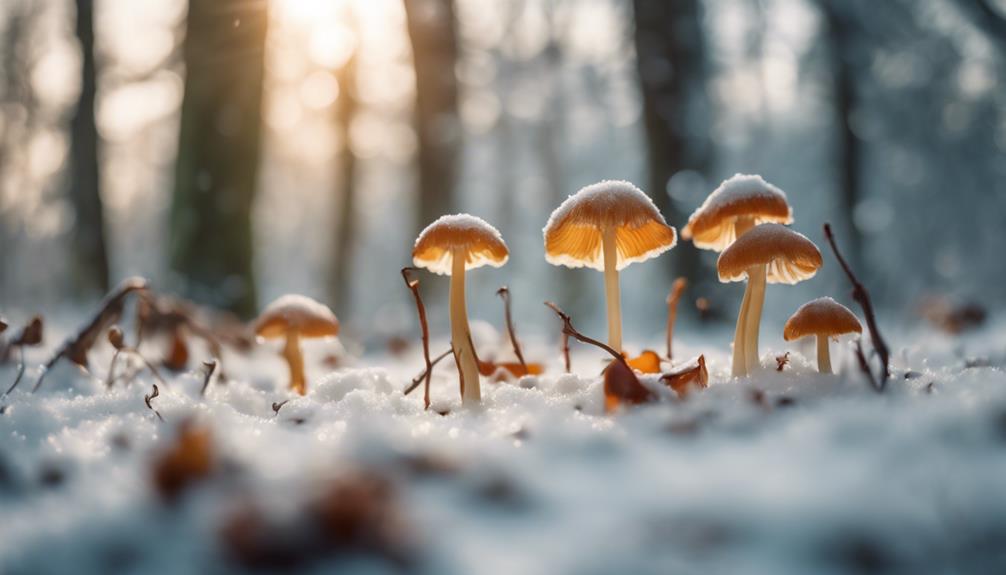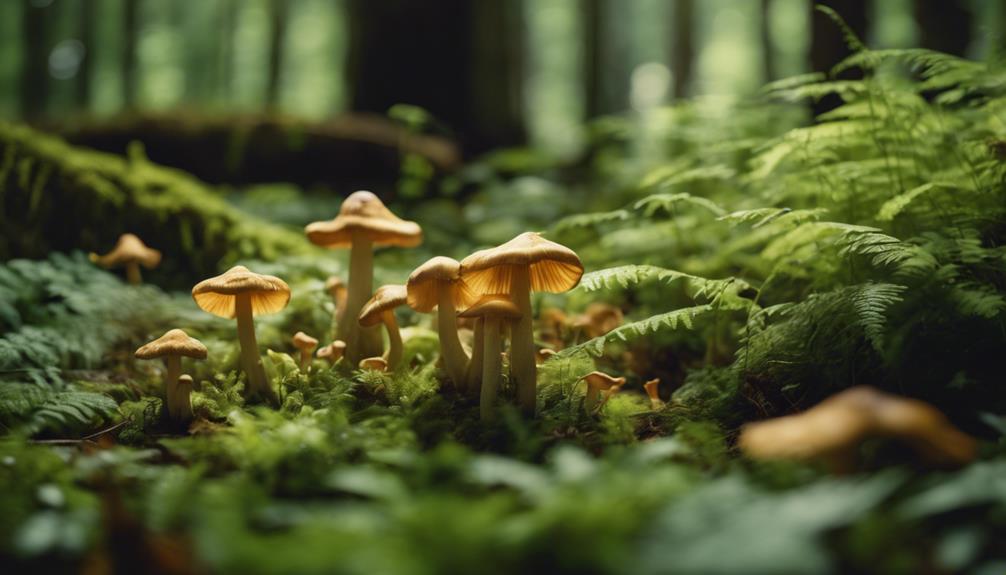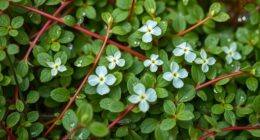When you're outdoors, you may encounter foraging wasps attracted to food smells or human odors. These wasps sting when they feel threatened or when protecting their nest. To minimize the risk of getting stung, wear light-colored clothing, avoid sudden movements, and stay calm. Foraging wasps sting to defend themselves, not to attack. Understanding wasp behavior and taking precautions can reduce the risk of stings. By being proactive, you can enjoy the outdoors while keeping stinging insects at bay. Now, discover more about wasp behavior, nest identification, and treatment options to stay safe this season.
Key Takeaways
- Foraging wasps sting when they feel threatened or are protecting their nest, and their primary goal is self-defense, not attack.
- Wearing white or pale colors can reduce the chances of being stung, as wasps are attracted to dark colors and human odors.
- Flapping or brushing off a foraging wasp can provoke it to sting, so it's essential to stay calm and move slowly.
- Foraging wasps can trigger allergic reactions, including anaphylaxis, and multiple stings can be dangerous, especially for those allergic to venom.
- Understanding wasp behavior and taking precautions can reduce the risk of stings, and being proactive can help minimize the dangers associated with their stings.
Understanding Wasp Behavior
When you're outdoors, understanding the behavior of foraging wasps can be your best defense against getting stung. Foraging wasps are attracted to food smells and human odors, making picnics and outdoor gatherings prime targets. Wearing white or pale colors can reduce the chances of being stung, as these colors are less likely to provoke an attack.
You should also be aware that flapping or brushing off a foraging wasp can provoke it to sting in self-defense. Remember, foraging wasps sting when they feel threatened or when protecting their nest. By understanding wasp behavior, you can take steps to avoid being stung.
Stay calm and move slowly if you encounter a foraging wasp, and avoid sudden movements that might provoke an attack. By being aware of your surroundings and taking simple precautions, you can minimize the risk of getting stung and enjoy the outdoors with confidence.
Why Foraging Wasps Sting

You're more likely to get stung by a foraging wasp if you unintentionally threaten its food source or nest, or if it mistakes you for a predator. When foraging for food, wasps can become aggressive if they feel threatened or provoked. To minimize the chances of being stung, it’s essential to stay calm and avoid swatting at wasps, as sudden movements can heighten their aggression. Beginner’s foraging tips often recommend wearing neutral-colored clothing and avoiding floral patterns or strong scents, which can attract these insects. Additionally, keeping a safe distance from wasp nests and any food sources they may be using can significantly reduce the likelihood of an encounter. Moreover, it’s important to remain aware of your surroundings and identify areas where wasps might be actively foraging. Beginners foraging tips for safe eating also suggest packing away food promptly and sealing trash containers tightly when outdoors, as open food sources can draw wasps and increase the risk of a sting. Maintaining a respectful distance from nature goes a long way in ensuring a peaceful experience while foraging.
Their primary goal is self-defense and protection of their nest, and they'll sting if they perceive a threat. If you're near their food source, they might mistake you for a competitor and sting in defense.
It's essential to understand that foraging wasps sting to defend themselves, not to attack. They're generally not aggressive and will avoid encounters if possible. However, if they feel threatened, they won't hesitate to sting.
By being aware of their behavior and taking precautions, you can minimize the risk of stings. Avoid sudden movements, don't disturb their nests, and keep food and drinks covered to reduce the likelihood of encounters.
Wasp Sting Risks and Dangers

While understanding why foraging wasps sting is important, it's equally necessary to know the potential risks and dangers associated with their stings, which can cause more than just temporary pain and discomfort.
You should be aware that wasp stings can trigger allergic reactions, leading to severe consequences. In some cases, multiple wasp stings can cause anaphylaxis, a life-threatening condition that requires immediate medical attention.
Foraging wasps, in particular, are more aggressive when they feel threatened, and their stingers can inject venom, causing pain, redness, and swelling. If you're allergic to wasp venom, even a single sting can be dangerous.
It's crucial to take precautions when outdoors, especially in areas where wasps are known to nest. By understanding wasp behavior and taking necessary precautions, you can reduce the risk of being stung and minimize the dangers associated with wasp stings.
Preventing Wasp Encounters

By taking proactive steps to prevent unwanted encounters, you can greatly reduce the likelihood of crossing paths with foraging wasps.
One effective way to do this is by creating DIY wasp traps using water, beer, and sweet attractants like jam. Adding a splash of washing-up liquid guarantees trapped wasps drown, preventing further encounters. Placing multiple traps in areas where wasps frequent can markedly decrease their numbers.
When venturing near potential wasp habitats, avoid wearing dark colors, which can attract these insects. Before pruning trees or shrubs, take a moment to check for suspended nests, as disturbing them can provoke foraging wasps.
By taking these precautions, you can minimize the risk of unwanted encounters. By being proactive, you can enjoy the outdoors while keeping these stinging insects at bay.
Wasp Nest Identification Tips

Identifying a wasp nest's location and type can be an important step in understanding the species you're dealing with and planning effective control strategies. When trying to identify a wasp nest, it's vital to approach with caution to avoid provoking defensive behavior from the wasps.
Here are some tips to help you identify a wasp nest:
- Look for paper-like material: Wasp nests are typically made of a paper-like material constructed by the wasps.
- Check the shape and size: Nests can vary in size and shape, with some being small and round while others are larger and more intricate.
- Determine the location: Paper wasps often build exposed umbrella-shaped nests, while yellowjackets prefer concealed underground nests.
- Observe from a safe distance: It's important to observe the nest from a safe distance to avoid disturbing the wasps and provoking an attack.
Avoiding Wasp Attractants

To minimize encounters with foraging wasps, you should take steps to avoid attracting them in the first place. One of the most effective ways to do this is to keep food and drinks covered.
When eating outdoors, be cautious not to leave any food remnants or spills behind, as these can quickly attract foraging wasps. It's also essential to avoid wearing sweet-smelling perfumes and lotions, as these can act as attractants.
When spending time outdoors, consider using insect repellent containing DEET to deter foraging wasps from approaching. Additionally, be mindful of your surroundings and avoid areas where food and drinks are being consumed.
If you're planning a picnic or BBQ, make sure to clean up promptly and dispose of trash properly. By taking these simple precautions, you can significantly reduce the likelihood of attracting foraging wasps and minimize the risk of an encounter gone wrong.
Safe Outdoor Practices

When you're outdoors, it's vital to take precautions to avoid attracting foraging wasps or provoking them into stinging.
You can start by wearing protective clothing, such as long-sleeved shirts and pants, to cover your skin. Additionally, it's important to avoid sudden movements, as these can be perceived as threats, leading to aggressive behavior from the wasps.
Wear Protective Clothing
When heading outdoors, it's crucial to wear long-sleeved clothing and closed-toe shoes to minimize exposed skin and reduce the risk of foraging wasp stings. Foraging wasps can sting if they feel threatened or provoked, so taking precautions is important. Wearing protective clothing is a simple yet effective way to safeguard yourself.
Here are some additional tips to keep in mind:
- Avoid loose clothing that may trap wasps or make it difficult to brush them away.
- Wear light-colored clothing, which is less attractive to foraging wasps than dark or bright colors.
- Keep your hair tied back to reduce the risk of wasps getting tangled in your hair.
- Don't wear sweet-smelling perfumes or lotions, which can attract foraging wasps.
Avoid Sudden Movements
You'll want to keep your movements slow and deliberate when outdoors, especially in areas where foraging wasps are present, since sudden movements can provoke them into stinging. When foraging wasps feel threatened or provoked, they can sting in self-defense. To prevent this, remaining calm and still if a wasp lands on you is crucial. Sudden movements, such as flapping or swatting at a foraging wasp, can trigger a defensive sting.
Here are some tips to help you avoid sudden movements and prevent stings:
| Action | Why It Helps | Tips |
|---|---|---|
| Move slowly | Avoids sudden movements | Walk calmly, avoid running or jumping |
| Remain calm | Reduces stress and panic | Take deep breaths, stay relaxed |
| Wear light-colored clothing | Less attractive to wasps | Avoid dark or bright colors |
| Be aware of surroundings | Helps you avoid wasps | Watch for wasps, stay alert |
Wasp Sting Treatment Options

If you've been stung by a foraging wasp, your first step should be to wash the affected area with soap and water to prevent infection. This simple act can make a big difference in reducing the risk of infection.
To further alleviate the discomfort, consider the following treatment options:
- Remove the stinger: Gently scrape out the stinger with a credit card or your fingernail to reduce venom injection.
- Apply a cold pack: Elevate the affected area and apply a cold pack to reduce swelling and pain.
- Take medications: Over-the-counter antihistamines and acetaminophen can help with itching and discomfort.
- Seek medical attention: If you experience difficulty breathing, chest tightness, or other severe symptoms, seek immediate medical attention.
Controlling Wasp Populations

In order to prevent foraging wasps from taking over your outdoor space, controlling their populations through a combination of preventative measures and targeted elimination strategies is essential.
Start by securing food sources, such as trash cans and pet food, to prevent foraging wasps from being attracted to your property. You can also set up traps baited with rotting fish and soapy water to catch foraging wasps and reduce their numbers.
For smaller nests, remove them early to prevent further population growth and potential stings. However, for larger nests, it's best to spray them at night with insecticides to effectively control and eliminate established wasp colonies.
Remember to wear protective gear and consider seeking professional help for above-ground nests to ensure safe and efficient population control.
Minimizing Wasp Threats

By taking proactive steps, you can minimize the threat of foraging wasps and reduce the risk of painful stings. When it comes to avoiding encounters with these stinging insects, being prepared is key.
Here are some essential tips to keep in mind:
- Avoid attracting foraging wasps: Refrain from wearing sweet scents or perfume, as these can attract wasps. Opt for light-colored clothing instead of dark or bright colors, which can provoke stinging.
- Use DIY wasp traps: Create your own wasp trap using sweet attractants to capture and remove foraging wasps from your surroundings.
- Stay calm if approached: If a foraging wasp lands on you, remain still and calm. Avoid sudden movements, as this can provoke stinging.
- Be cautious in wasp-prone areas: When entering areas where foraging wasps are present, exercise caution to prevent unpleasant encounters.
Frequently Asked Questions
Do Foraging Wasps Sting?
You're wondering if foraging wasps sting, and the answer is, they usually don't, unless you threaten or provoke them while they're focused on gathering food for their colony.
Do You Need to Do Anything for a Wasp Sting?
When you're stung, you'll want to remove the stinger quickly, apply a cold compress, and take over-the-counter pain relievers to alleviate symptoms; if you experience severe reactions, seek medical attention right away.
Can a Wasp Sting You Without You Knowing?
You're wandering through a sunny meadow, oblivious to the sneaky wasp that's just slipped in a stealthy sting, leaving you none the wiser – that is, until the delayed reaction kicks in, leaving you wondering what hit you.
Will a Wasp Sting You if It Lands on You?
If a wasp lands on you, it won't necessarily sting; it's likely foraging for food. You won't get stung unless you provoke it, so remain calm, still, and gently brush it off if needed, and you'll minimize the risk of getting stung.
Conclusion
As you venture outdoors, remember that foraging wasps are just doing their job, but that doesn't mean you have to become their next target. By understanding their behavior, taking preventive measures, and knowing how to treat stings, you can minimize the threat of these buzzing insects.
So, stay informed, stay vigilant, and don't let wasps ruin your outdoor fun – after all, knowledge is the best defense against these unwanted visitors.










